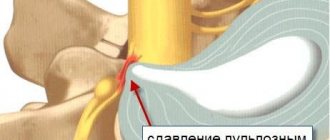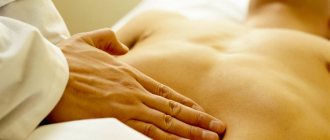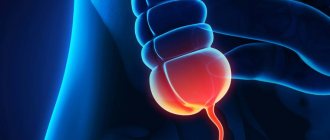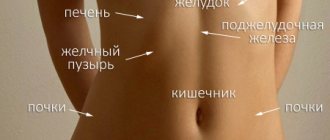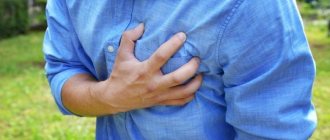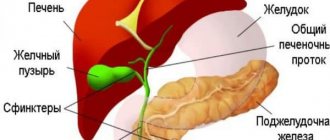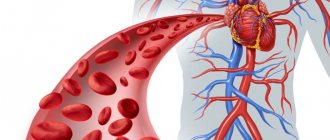Most people associate tingling in the right hypochondrium with diseases of the liver and gallbladder. This is a common, but far from the only cause of this symptom. In some cases, pain in this area may not be associated with pathology. However, if tingling occurs frequently and develops into acute pain, then this indicates a serious problem in the body. Only a specialist can determine the exact cause of the discomfort. Next, we will look at the most common diseases that may be accompanied by discomfort in the right hypochondrium.
Natural causes
The cause of tingling in the right hypochondrium can be excessive sports activities. This phenomenon is especially common among people jogging at a fast pace. While running, a person’s blood supply to internal organs, including the liver, increases, and the intercostal muscles stretch. This is accompanied by pain.
Typically, such pain occurs in people who have recently started exercising. Their body has not yet adapted to high stress. In such cases, it is necessary to do a short warm-up before jogging. This will help “warm up” the muscles and prepare the body for the load.
If while jogging a person feels a tingling sensation in the right hypochondrium, then it is necessary to change running to fast walking. As soon as the pain subsides, you can resume training.
Pain during physical activity is caused by physiological reasons and is not a sign of pathology. However, if the discomfort does not go away with rest, then you need to visit a doctor and get examined.
Tingling in the right hypochondrium is often observed in women in late pregnancy. During this period, the fetus grows rapidly and the uterus puts pressure on nearby organs. If the unborn child is positioned head down, then his legs can put pressure on the liver and stomach. Therefore, pregnancy in the third trimester is often accompanied by pain and heartburn.
The above reasons are natural and do not require special treatment. Next, we will consider possible diseases that may be accompanied by unpleasant sensations in the right side, as well as the treatment of these pathologies.
Pain in right side
Take care of your health - save the link
To perform the diagnosis correctly, it is necessary to identify not only the localization of unpleasant sensations, but also their nature and intensity. This is very important, because only by finding out why the right side hurts, the doctor will be able to prescribe an actual treatment regimen that will really help the patient and alleviate his condition. The pain can be dull or sharp, girdling, stabbing, cramping. The reasons for the appearance of each are individual.
Aching
They are classified as permanent or periodic. The first occurs in oncology, cysts, bone fractures. Intermittent aching pain in the right hypochondrium is typical for:
- Hepatitis (acute, chronic).
- Pyelonephritis, hydronephrosis, kidney tumors, apostematous nephritis.
- Cirrhosis.
- Adrenal tumors.
- Liver cancer.
- Chronic cholecystitis, cholangitis.
- Mild colitis, intestinal diverticulosis.
- Parasites.
Pulling
There are several groups of diseases that are characterized by this symptom. Gynecological pathologies in which the right side is pulled:
- Right-sided adnexitis is acute or chronic. The symptom is accompanied by chills and high fever.
- Apoplexy of the ovary. Attack pain in the abdomen on the right, cannot radiate to other areas.
- Ectopic pregnancy with tubal rupture.
- The stalk of the mass on the ovary is twisted.
Does the right side of your stomach hurt? This may indicate the following urological diseases:
- chronic pyelonephritis;
- kidney tumors.
A pulling sensation is a symptom of a number of surgical diseases:
- appendicitis;
- strangulated hernia.
Stitches under the rib on the right
Colic is a very unpleasant symptom. There are many reasons for their presence. Stitching pain in the right side arises due to:
- There are not enough passable bile ducts. The attacks overtake the patient unexpectedly, at night, and by morning they become a little quieter. Colic is unpleasant, but passes quickly.
- Ulcerative duodenitis (duodenal ulcers). Severe colic on the right and near the navel, which is accompanied by fever, bloating, and nausea.
- Presence of kidney stones. They cause a tingling sensation as they move along the ducts and scratch them.
- Pyelonephritis. Constant colic is not typical for this disease, but occurs periodically with excessive physical activity.
Dumb
Notifies a symptom about a period of exacerbation of chronic diseases. Dull pain in the right hypochondrium is indicated by:
- Chronic hepatitis. It diverges when you press on the liver.
- Chronic cholecystitis. The inner wall of the gallbladder is “scratched” by stones. This brings painful sensations, which intensify when consuming fatty foods.
- Chronic pancreatitis. The right side hurts after eating, nausea and heaviness appear.
- Chronic duodenitis. If the wall of the duodenum becomes inflamed, a person’s stomach ache and growls, heartburn and nausea are observed. Vomiting occurs, in which there are traces of bile.
Heaviness in the right hypochondrium
First of all, this symptom is characteristic of intestinal diseases. Heaviness in the right side of the lower abdomen is observed with infectious lesions of this organ, dysbacteriosis, colitis, ulcers and the presence of neoplasms. With intestinal dysfunction, additional symptoms appear: stool disorders, weakness after eating, and sometimes vomiting. Another cause of severity may be diseases of the adrenal gland or kidney.
Sharp
Accompanies pathologies of some organs. Sharp pain in the right side often occurs with diseases of the liver, gall bladder, and duodenum. Its suddenness is a sign that the functioning of the organs has suffered a serious malfunction. The most common causes of pain:
- the bile ducts are blocked by a stone;
- ovarian cyst;
- appendicitis is inflamed;
- ectopic pregnancy;
- ovarian apoplexy;
- strangulation of the inguinal hernia.
Burning
This extremely unpleasant sensation indicates pathologies of internal organs. A burning sensation in the right hypochondrium develops due to:
- Gallbladder dysfunction. Burning pain begins due to bile retention and inflammation of the organ.
- Diseases of the liver, pancreas, intestines. A burning sensation periodically appears with hepatitis, cirrhosis, chronic pancreatitis, and duodenal ulcer.
- Diaphragmatic hernia.
- Diseases of the urinary organs and kidneys. A burning sensation occurs between attacks of colic.
- Osteochondrosis of the lumbar region.
- Neurological diseases.
Acute
The phenomenon in the lower abdomen arises due to:
- appendicitis;
- pancreatitis;
- intestinal diverticulum;
- liver diseases;
- intestinal blockage (severely radiates to the groin);
- inguinal hernia;
- duodenitis.
Acute pain in the right hypochondrium reports:
- bile duct dyskinesia;
- cholecystitis;
- hepatitis;
- herpes zoster.
If the pain is more from the back, then you need to check for:
- renal dysfunction;
- the presence of stones in the ureter.
Discomfort
Such an unpleasant sensation sometimes occurs even in healthy people due to the consumption of food or alcohol that is difficult for the body. Discomfort in the right hypochondrium accompanies cholelithiasis and cholecystitis. It can be caused by hepatitis and liver abscesses. However, this condition can be caused by stress, physical or mental stress, which have nothing to do with organ pathologies.
Pulsating
There are many reasons for the occurrence of this symptom. Throbbing pain in the right side indicates:
- Digestive disorders or intestinal pathologies. The stomach shoots due to dysbiosis, bloating, poisoning.
- PMS. Abdominal throbbing often begins before menstruation. If it is tolerable, then there is no need to worry.
- Ailments of the female genital organs. It is especially dangerous if the pain is accompanied by severe bleeding.
cutting
A number of diseases cause this symptom. Cutting pain in the right side occurs when:
- Inflammation of the duodenum. It is periodic in nature.
- Blockage of the bile duct with a stone.
- Pinched inguinal hernia. A dangerous condition that requires urgent surgery or removal by laparoscopy.
- Rupture of an abscess on an inflamed fallopian tube.
- Acute appendicitis.
Pressure under the ribs on the right
From time to time, the symptom occurs after eating heavy food or alcohol. The liver tries to overcome the increased load, which makes the person feel discomfort. There are also dangerous reasons why there is pressure in the right side under the ribs:
- Gynecological diseases. A feeling of squeezing is possible with salpingitis, ovarian tumor, rupture of the cyst or torsion of its leg, oophoritis, vulvoedia, endometritis, diverticulitis, adnexitis.
- Urological diseases. The feeling of pressure is caused by cystitis, pyelonephritis, inflammation or infections of the urinary system.
- Tumors of the male reproductive organs.
- Inguinal hernia.
- Intestinal diseases.
Bursting
The symptom is very common and causes a lot of trouble. Bursting pain in the right hypochondrium occurs when:
- colitis;
- biliary dyskinesia;
- liver diseases: hepatitis, echinococcosis, cirrhosis, pancreatitis;
- diseases of the small intestine;
- pyelonephritis;
- exacerbation of chronic cholecystitis;
- appendicitis;
- duodenitis.
Liver and gallbladder diseases
The cause of tingling in the right hypochondrium may be an attack of hepatic colic. This is a manifestation of gallstone disease. Painful sensations occur when a stone gets stuck in the bile duct.
The attack may begin with a slight tingling sensation. Then the pain increases and becomes unbearable. The person rushes about and tries to take a position that relieves the excruciating pain. Nausea and vomiting are often observed due to impaired bile flow.
In such cases, you must immediately call an ambulance. Colic is treated surgically; the patient must undergo surgery to remove the stones.
Pain under the ribs on the right may be a sign of cholecystitis - inflammation of the gallbladder. Tingling is accompanied by nausea, vomiting, and belching with an unpleasant odor. A person feels a bitter taste in his mouth. During an attack, there is an increase in temperature.
If you have such symptoms, you should not delay visiting your doctor. Otherwise, cholecystitis may become chronic. The patient is advised to remain in bed and adhere to a special diet (table No. 5). Antispasmodic, choleretic and antibacterial drugs are prescribed.
Liver disease can also cause tingling:
- Hepatitis. The disease is often accompanied by tingling in the right hypochondrium after eating. This is due to the fact that when food is digested, bile is released, which provokes the occurrence of pain. Tingling is accompanied by nausea, increased gas formation, yellowing of the skin and whites of the eyes. Treatment of hepatitis consists of following a diet, administering infusion solutions for detoxification, and taking hepatoprotectors.
- Cirrhosis. At the beginning of this dangerous disease, the patient feels a slight tingling sensation in the right hypochondrium. Often the patient does not pay attention to this, and as a result, the disease is diagnosed too late. Subsequently, severe pain in the liver, itching of the skin, sudden weight loss, nausea, vomiting, and jaundice occur. In the early stages, the disease can still be cured with conservative methods. Hepatoprotectors and sodium preparations are prescribed. beta blockers. In advanced cases, a person can only be saved through surgery or liver transplantation.
- Helminthic diseases. Some parasites (for example, echinococci) form cysts in the liver tissue during their life cycle. They put pressure on blood vessels and hepatocytes. This is accompanied by a feeling of tingling and squeezing. When an echinococcal cyst ruptures, acute excruciating pain occurs. Treatment consists of surgical removal of the cyst.
In all liver pathologies, pain occurs due to stretching of the organ capsule. Unpleasant sensations are localized in the right hypochondrium, but can also radiate to other parts of the body.
What can hurt on the right side?
On this side there are some internal organs, the dysfunction of which is directly related to discomfort. What can hurt on the right side:
- liver;
- kidneys;
- pancreas;
- intestines;
- ovaries;
- appendicitis.
The right lobe of the abdominal cavity is conventionally divided into the subcostal (above) and pelvic (below) parts. The first contains the gallbladder, adrenal gland with kidney, liver, diaphragm, and ileum. The second contains the ovary (in women) with the appendix (in all). Rarely, but sometimes the wandering pain of organs located on the left radiates to the right. This could be the stomach, pancreas. To establish the exact root cause of unpleasant sensations, you need to clearly determine their location.
Right under the ribs in front
It can be constant or periodic. Constant pain on the right side under the ribs in front occurs due to the following ailments:
- Gallbladder: cholecystitis, cholelithiasis, parasites.
- Pancreas: acute pancreatitis, oncology (late stages).
- Liver: hepatitis, cirrhosis, parasites.
- Diaphragms: hernia, tumors, diaphragmatitis.
Pain in the right side of the abdomen in front may not be related to pathologies. From time to time everyone experiences such sensations when:
- Pregnancy. The growing fetus is in the uterus and creates pressure on the woman’s organs, causing pain.
- Intense physical activity. If a person is unaccustomed to doing hard work or performing sports exercises, a lot of adrenaline is released. Therefore, blood flow increases, and the vena cava expands and compresses the liver.
- Premenstrual syndrome. With increased production of estrogen that occurs before menstruation, a spasm of the biliary tract occurs, which is affected by this hormone.
Right side from the back
This phenomenon is characteristic of a number of renal pathologies. Does your right side from your back hurt? This warns about:
- Acute pyelonephritis. Intense but dull pain. If you tap on the lower ribs, it becomes stronger.
- Chronic pyelonephritis. A weak aching pain sensation that becomes intrusive if it is damp and cool outside.
- Retroperitoneal hematoma. If a person falls on his back or is seriously injured, then a vessel behind the peritoneum ruptures and a hematoma (blood accumulation) is obtained, pressing on the organs.
- Acute pancreatitis. A girdling pain sensation that increases if a person lies down. Additional symptoms are nausea, diarrhea, vomiting.
- Urolithiasis. Dull painful sensation. It increases if a person moves a lot or drinks excessive amounts of liquid.
- Pinched nerve. Diffuse pain at the top, increasing under the shoulder blade on the right.
Posterior lumbar area
There are many circumstances for the occurrence of such a symptom. Does your right side hurt in your lower back? You need to be examined for ailments:
- Musculoskeletal system: spondylolisthesis, osteochondrosis, osteomyelitis, osteoporosis.
- Muscles: inflammation, injuries, sprains.
- Neurological: plexitis or neuritis.
- Internal organs: kidneys (pyelonephritis, stones, hydronephrosis, colic), intestines, gall bladder, liver, ovaries in young ladies.
At waist level
There are many possible reasons for this phenomenon. Pain in the right side at waist level in people with:
- Volvulus.
- Liver diseases.
- Problems of the pancreas.
- Appendicitis. Sharp pain that gets worse when you inhale or move.
- Inflammation of the uterine appendages.
- The presence of small stones in the gallbladder. Paroxysmal pain.
- Inguinal hernia.
- Kidney diseases: prolapse, hydronephrosis, glomerulonephritis, stones.
Pain in the liver area
The list of reasons for this phenomenon is very extensive. Pain in the liver area, which causes bitterness in the mouth, occurs when:
- Mononucleosis and hepatitis (viral, bacterial, toxic, radiation, autoimmune).
- Parasitic infestations.
- Congenital pathologies (cyst or polycystic disease).
- Cholecystitis.
- Chronic poisoning with toxins, alcohol, drugs.
- Cirrhosis.
- Some viral diseases.
- Oncological lesions.
Gastrointestinal pathologies
An attack of appendicitis may begin with a slight tingling sensation in the right side of the hypochondrium. Then the pain increases and becomes very severe. They become diffuse and spread throughout the entire abdomen. This is accompanied by nausea, vomiting, constipation or diarrhea, and fever. The abdominal wall is very tense and becomes hard as a stone.
If you have such symptoms, you should call an ambulance as soon as possible. The patient requires emergency hospitalization and surgery. Otherwise, appendicitis may be complicated by peritonitis, which poses a threat to the patient's life.
Tingling can be a sign of many other gastrointestinal pathologies. Most often, this symptom occurs with colitis and gastrointestinal infections. These diseases are accompanied by diarrhea. The intestinal mucosa is inflamed and irritated. In this case, a tingling sensation may be felt that radiates to the right hypochondrium.
Acute pain
Acute pain in the right hypochondrium is an extremely unfavorable symptom. This is a sign that the patient is in need of emergency medical attention. The following conditions and diseases can cause acute pain under the right rib: 1.
- liver rupture;
- liver hematoma;
- gallbladder rupture;
- kidney rupture;
- prolapse of the kidney due to ligament rupture;
- fracture of one or more lower ribs on the right.
2. Renal colic. 3. Hepatic colic. 4. Incarceration of the renal cyst. 5. Acute cholecystitis. 6. Acute pancreatitis.
All of these diseases and injuries are accompanied by acute, difficult-to-bear pain. The pain may cause the patient to lose consciousness, especially if injured. If consciousness is preserved, the patient rushes about, trying to find a body position that relieves pain.
A sick or injured person with acute pain under the right rib should be taken to a medical facility immediately.
Heart diseases
With cardiac pathologies, tingling most often occurs in the left hypochondrium in front. However, stabbing sensations can also be localized on the right. This is due to the fact that with heart disease, blood circulation is impaired and the liver increases in size.
A cardiologist is involved in the diagnosis and treatment of such pathologies. Therapy depends on the type of disease.
How to recognize that tingling in the right hypochondrium is associated with heart disease? Cardiac pathologies are accompanied by a feeling of chest compression, shortness of breath, and dizziness. The pain may radiate to the arms or neck. An increase in blood pressure is often observed.
Pain on the right front
If there is a stabbing sensation in the right hypochondrium, the reasons can be varied.
Among them are:
- Liver diseases. Any disorders or diseases that develop in this organ cause pain. It occurs because the organ fills with blood and becomes stretched, like a capsule. When it stabs in the liver area, the pain often resembles a dull or bursting character. In addition, nausea, burning or heaviness may be bothersome.
- Hepatitis. Unpleasant sensations in the right side in this case are associated with the release of toxins. Gas formation may increase, the patient may feel nauseous and vomit. With hepatitis, pain is more common after eating. A characteristic symptom of the disease is a change in the color of bowel movements, as well as yellowness in the eyes.
- Cirrhosis. What causes the stabbing in the right side in this case? The pain with this disease is localized on the right under the ribs. It feels like a burning sensation. In advanced cases, it can spread to the back of the body.
- Echinococcosis is a disease related to helminthic infestations. Echinococcus in the process of its development leads to the formation of cysts; they are located in the liver tissues. That is why if the liver is stabbed, the reasons may lie in infection with parasites. The condition is dangerous because the cyst can rupture. In the absence of help, peritonitis will begin to develop.
- Heart failure. As pathology develops, blood flow is disrupted and the liver increases in size. The nature of the pain is nagging, in addition to this, heaviness is disturbing.
One of the causes of pain
If it stings under the right rib in the front, this may be due to intestinal diseases. The location of the pain may vary, often affecting the entire abdomen. In addition, there is bloating, upset stool, and foreign impurities in the stool.
MORE ABOUT: Black feces after de nol withdrawal
Ectopic pregnancy
At the beginning of an ectopic pregnancy, a woman does not feel any pain. But as the fetus grows, a tingling sensation appears. This is accompanied by bleeding. The tingling then develops into pain, usually on one side of the abdomen (right or left).
If a pregnant woman experiences such symptoms, she needs emergency surgical care. This condition is extremely dangerous. Without surgery, a rupture of the fallopian tube and severe intra-abdominal bleeding can occur, which often leads to death.
Is it possible to figure it out on your own?
Colicky pain occurs with inflammatory infiltration of tissues, purulent-necrotic lesions, and accompanies purely physical damage to organs. Its origin can be accurately determined only through diagnostic procedures and laboratory tests. You can suspect where the discomfort is coming from on your own. To do this, you should focus on the accompanying symptoms.
Pathologies in the chest
Colic is always accompanied by damage to the lung tissue. Provocateurs of pain are inflammatory lesions in pneumonia, purulent-necrotic lesions in tuberculosis. Pain also accompanies the formation of pulmonary tumors. It acquires a stabbing character in the later stages of oncology. The pain may be due to inflammation of the diaphragm. It develops against the background of inflammatory lesions of the lungs or congestive processes.
Stitching pain due to the lung is constantly present, intensifies with changes in body position. The intensity increases when coughing, sneezing, or taking a deep breath. It decreases if you breathe shallowly and lie on the other side. Discomfort with chest lesions is accompanied by an increase in body temperature and symptoms of general intoxication (weakness, drowsiness, lack of appetite).
Occasionally, right-sided pain under the ribs indicates myocardial infarction. In this case, it radiates to the corresponding arm, collarbone, scapula and is not relieved by Nitroglycerin.
Diseases of the digestive glands
Stitching pains often accompany inflammation of the pancreas - acute and chronic pancreatitis. This organ is located deep in the abdominal cavity, in its upper part. The gland is extended to the left side. Its expanded part (head) is located under the lower right costal arches. Inflammation in this area manifests itself with a sharp stabbing discomfort in the right side. The sensations intensify after eating and gradually spread to other areas.
Pancreatitis is characterized by girdle pain. The discomfort that occurs on the right quickly spreads to the epigastric region and left side. Additional symptoms are nausea, a feeling of heaviness in the abdomen, stool disorders, pale skin.
The second gland from which pain can come is the liver. The organ itself has no innervation. Painful sensations in the right hypochondrium occur with lesions of the gallbladder. This is a hollow contractile organ in which bile accumulates. With circulatory disorders, congestive processes, and poor nutrition, stones form in the bladder (cholelithiasis). They can enter the bile duct during a reflex release of bile. Stones can completely block the lumen of the duct, damaging its walls and the tissues of the bladder itself.
When bacteria enter the bile, cholecystitis develops. The pathology is accompanied by stabbing pains, which sometimes develop into hepatic colic (very severe pain). Among the accompanying symptoms are nausea, vomiting, fever, icteric syndrome (yellowing of the sclera, mucous membranes, skin throughout the body, the appearance of a hemorrhagic rash).
Pain in the side comes from the liver with serious inflammatory and degenerative lesions of the organ (hepatitis, cirrhosis, steatosis). Severe discomfort occurs in the later stages of the pathology, when the liver capsule and surrounding organs are involved in the process.
Pain due to intestines
Acute colic-like pain on the right can accompany intestinal diseases. For example, duodenitis (inflammation of the duodenum), in which ulcers form on the mucous membrane. The pain often occurs at night and becomes less intense after eating. Accompanied by nausea, bloating, heaviness in the abdomen, and weakness.
Unpleasant symptoms characterize nonspecific ulcerative colitis and Crohn's disease when the pathology is localized on the right side of the colon. With lesions of the large intestine, the nature of the stool changes - diarrhea, constipation occur, and impurities of pus, blood, and mucus are detected in the stool.
If colitis is in the right hypochondrium, appendicitis cannot be ruled out. Inflammation of the appendix provokes pain in the lower right quadrant of the abdominal cavity. However, pain may radiate to the top or occur here if the appendix is abnormally positioned. Symptoms of appendicitis include nausea, constipation or diarrhea, and fever. The pain in the right side is relieved if the patient lies on it.
Kidney pain
With inflammation of the kidneys and urolithiasis, severe stabbing pain occurs. They are localized on the side where the pathological process is concentrated. Pain is felt in the lumbar region and is often regarded by the patient as discomfort under the rib. You can suspect a disease of the right kidney based on the symptoms accompanying pain:
- frequent and painful urination;
- blood in the urine;
- increased body temperature;
- increased pain after a light blow with the edge of the palm on the lower costal arch.
Stitching pain in the right hypochondrium may indicate the onset of renal colic. This is a severe pain syndrome that threatens shock, so it is better not to delay visiting a doctor.
If the cause is a disease of the musculoskeletal system
Often pain on the right occurs against the background of osteochondrosis of the thoracic spine. Discomfort is felt more strongly on the back and sides. Stitching pain accompanies degenerative lesions of the vertebral discs and pinching of the corresponding nerve roots. The condition is called intercostal neuralgia. The pain often worsens when inhaling, coughing, moving and turning the body. The patient characterizes it as a needle prick in a specific place. Such pain can be distinguished by the absence of additional symptoms: intoxication, digestive disorders, heart rhythm disturbances. There may be a double sensation of pain - in the sternum and back at the same time.
Pneumonia
If inflammation develops in the right lung, the patient usually feels chest pain. They may be accompanied by a slight tingling sensation under the ribs on the right. Unpleasant sensations intensify with breathing movements. The patient has a fever and a severe cough with sputum.
Pneumonia is treated with antibiotics, antipyretic and mucolytic drugs.
How to distinguish colic?
When, when inhaling, there is a stabbing sensation in the right side, or the sensations appear in a calm state, it is difficult to determine what they are connected with. And yet it is possible.
The nature of the pain can be:
- Intestinal. The pain is paroxysmal in nature. If you press lightly on the stomach, the discomfort will become less pronounced. Accompanying symptoms are bloating, nausea, vomiting.
- Renal. The pain in the lumbar region, under the ribs, is severe. In order to recognize it, you should pay attention to the following symptoms - difficulty during bowel movements, problems with urination, increased gas production.
- Hepatic. It most often starts to bother me after lunch. This is pain under the ribs on the right, and can spread to the entire abdomen, as well as to the area of the shoulder blades. In addition, there is dry mouth, increased sweating, fever and even vomiting.
The location of pain in renal colic may vary
All this is unpleasant and dangerous in its own way, which is why after the appearance of unpleasant sensations you should go to the hospital, because only a doctor can identify the true cause of the discomfort.
MORE ABOUT: Polygynax suppositories - how to use for treatment, active ingredient, contraindications and reviews
Simultaneous tingling on the left and right
Tingling in the left hypochondrium after eating may be a sign of acute pancreatitis. Unpleasant sensations simultaneously arise in the right side of the body. Subsequently, the pain becomes extremely intense and acquires a girdling character. The patient is advised to take enzymatic drugs and enterosorbents, as well as a strict diet.
The cause of tingling in the left hypochondrium may be myocardial infarction, occurring in an atypical gastralgic form. At the beginning of the attack, a tingling sensation appears in the left chest. Then the pain moves to the stomach area and radiates to the right hypochondrium. Severe pain in the heart is not observed with this form of heart attack. This disease requires urgent hospitalization. Without treatment, the probability of death from a heart attack reaches 99%.
Tingling in the left side of the hypochondrium may be a symptom of an abscess in the subdiaphragmatic region. This disease occurs as a complication after operations on the gastrointestinal tract. Stitching sensations also affect the right area. The tingling quickly develops into a sharp pain that radiates to the collarbone. The attack occurs suddenly. The pain intensifies when breathing and coughing.
Tingling in the left hypochondrium may be a sign of spleen pathologies. Pain occurs due to the enlargement of the organ. However, with such diseases, stabbing sensations are noted only on the left. Diseases of the spleen are often accompanied by liver pathologies. In this case, the pain can be localized on both the left and right sides.
How to determine why you have pain in your right side
Of course, you won’t be able to make an accurate diagnosis on your own. However, you can get some idea about it based on exactly how your right side hurts . “In acute diseases, pain occurs suddenly, increasing in intensity in a short period of time (hours, sometimes days),” notes Bulat Yunusov. “If the cause is some kind of chronic disease, then the pain syndrome is either constant or wave-like in nature, not very intense.”
It is also important to check for additional symptoms. “To correctly determine the cause of pain in the right side, you need to listen to the nature of this pain. For example, muscle pain is usually dull and aching, says Anton Loboda. “However, muscle pain can also be acute, since in addition to the muscles in the right side there are intervertebral joints that can be a source of discomfort. In case of cholelithiasis or acute cholecystitis, the pain is accompanied by fever. This situation can be called “pain-plus” - pain and temperature. The discomfort caused by renal colic can also be “pain-plus,” but pain plus frequent urination or the presence of blood in the urine. Pain caused by intestinal problems—pain plus diarrhea.”
Which doctor should I contact?
There are many pathologies that cause tingling in the right hypochondrium. They are treated by doctors of various profiles: gastroenterologists, pulmonologists, urologists, gynecologists, cardiologists. Therefore, you first need to see a therapist. Your general practitioner will refer you to the right specialist.
Patients are prescribed the following diagnostic examinations:
- Ultrasound of the abdominal organs;
- chest x-ray;
- ECG;
- gastroscopy;
- clinical and biochemical blood and urine tests.
The choice of the necessary examination method depends on the expected diagnosis.
Cholecystitis
Another unpleasant phenomenon that provokes the appearance of colic in the right side and lower abdomen is cholecystitis. This disease occurs due to inflammation of the gallbladder. Eating too spicy or fatty foods can trigger the onset of cholecystitis.
Pain with cholecystitis occurs in the right side. Painful sensations arise under the right upper rib. Colic can spread under the shoulder blades or in the shoulder joint. In addition, cholecystitis may cause:
- “egg” burps;
- severe nausea;
- gagging;
- elevated body temperature.
Treating this disease at home is strictly prohibited. If you have the first signs of cholecystitis, you should seek help from a doctor. A complication of cholecystitis can be suppuration of the gallbladder. After this, drug therapy will no longer help and urgent surgical intervention will be required.
Prevention
To prevent pain in the right hypochondrium, you must follow the following recommendations from doctors:
Many of the above diseases respond well to treatment in the early stages. Therefore, every person needs to undergo regular preventive examinations. This will help to identify pathology in time.
Pain in right side behind
Why does it sting on the right side closer to the back of the body?
As the stone moves along the ureter, pain will be felt on the right side behind the ribs, and then moves to the groin area
The cause may be a pathological process developing in the kidney, osteochondrosis, impaired blood flow in the vena cava and other diseases.
- Chronic cholecystitis. This disease causes aching pain on the right side, which radiates to the lumbar region. In addition, signs such as a feeling of bitterness in the mouth, headache, and appetite disturbance are observed.
- Stones in the kidneys. As the stone moves, it irritates the receptors of the pelvis and ureter. Therefore, pain is felt both on the side and on the back. Characteristic of urolithiasis is the irradiation of pain in the groin and femoral area. Blood clots in the urine and vomiting are also possible.
- Pyelonephritis. The inflammatory process in the right kidney leads to pain on the right under the ribs from the back. Associated signs will help to recognize the disease: temperature, the presence of a false urge to urinate, pain during urine excretion, swelling of the face. If there is a purulent infection, the pain becomes nagging and prolonged.

